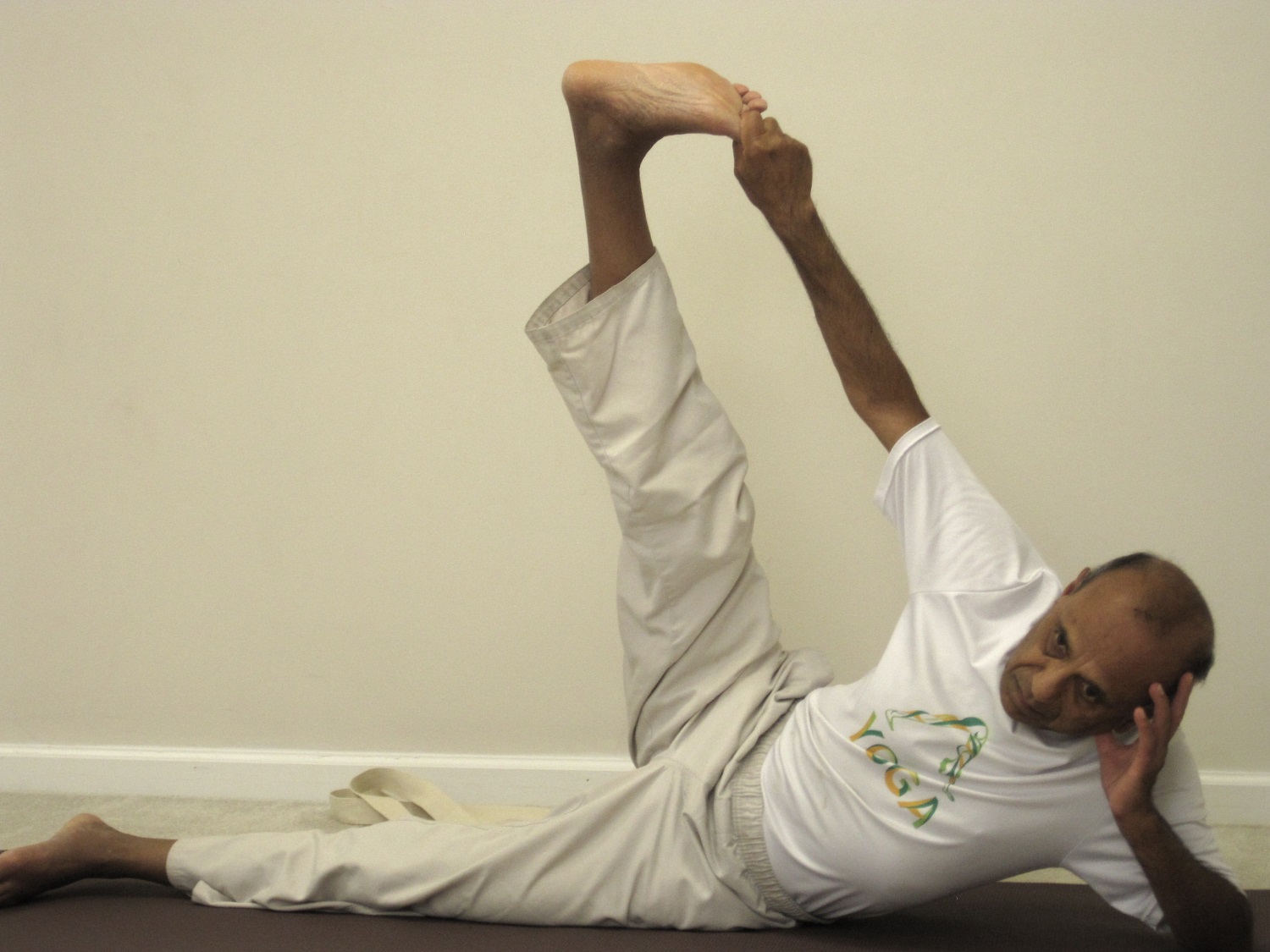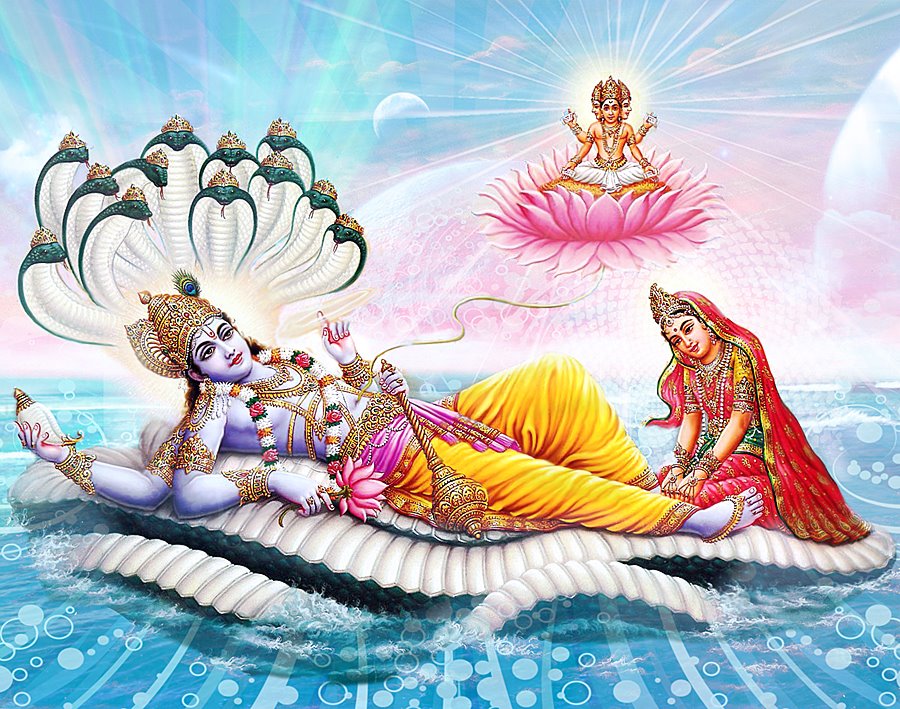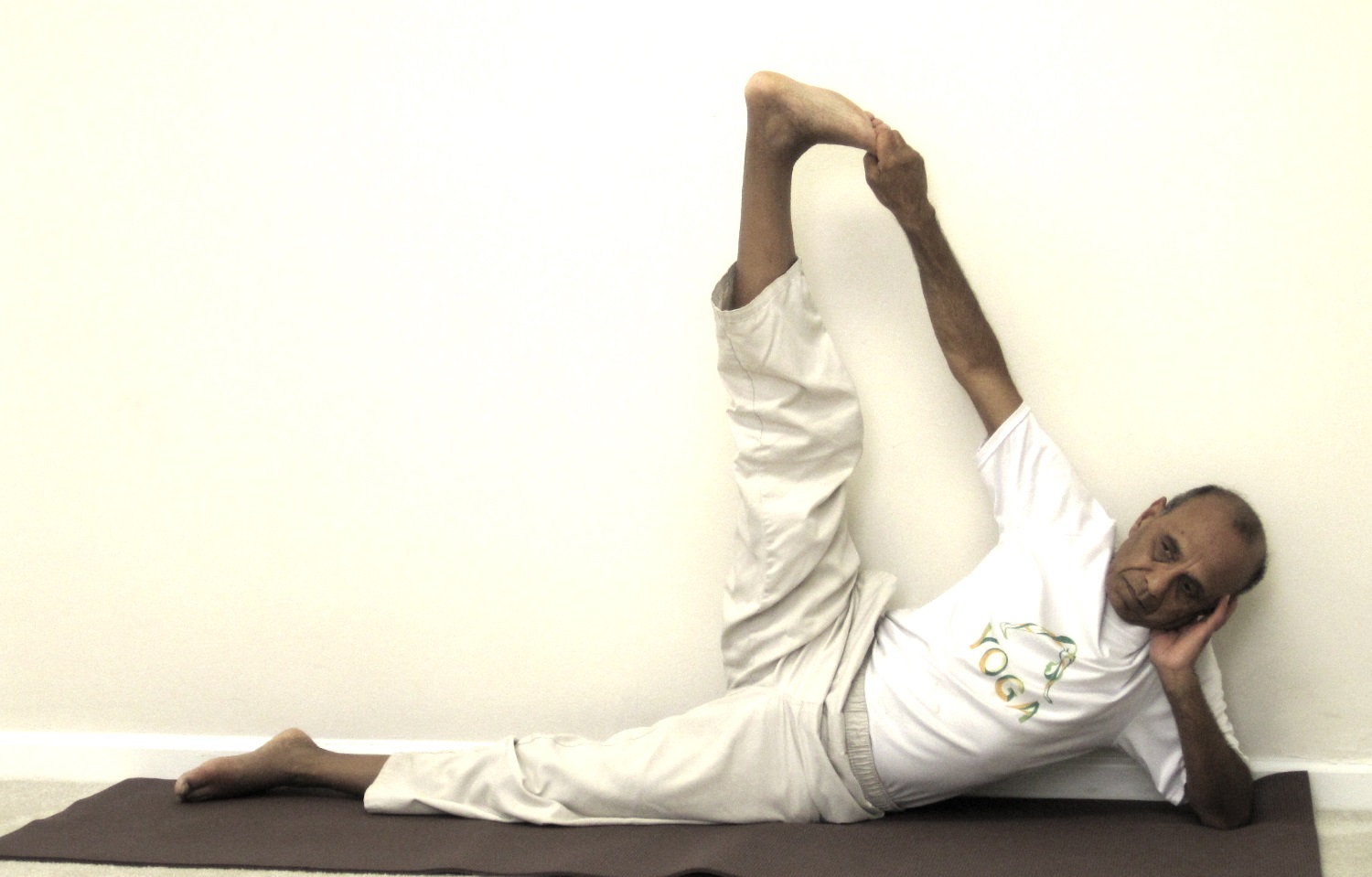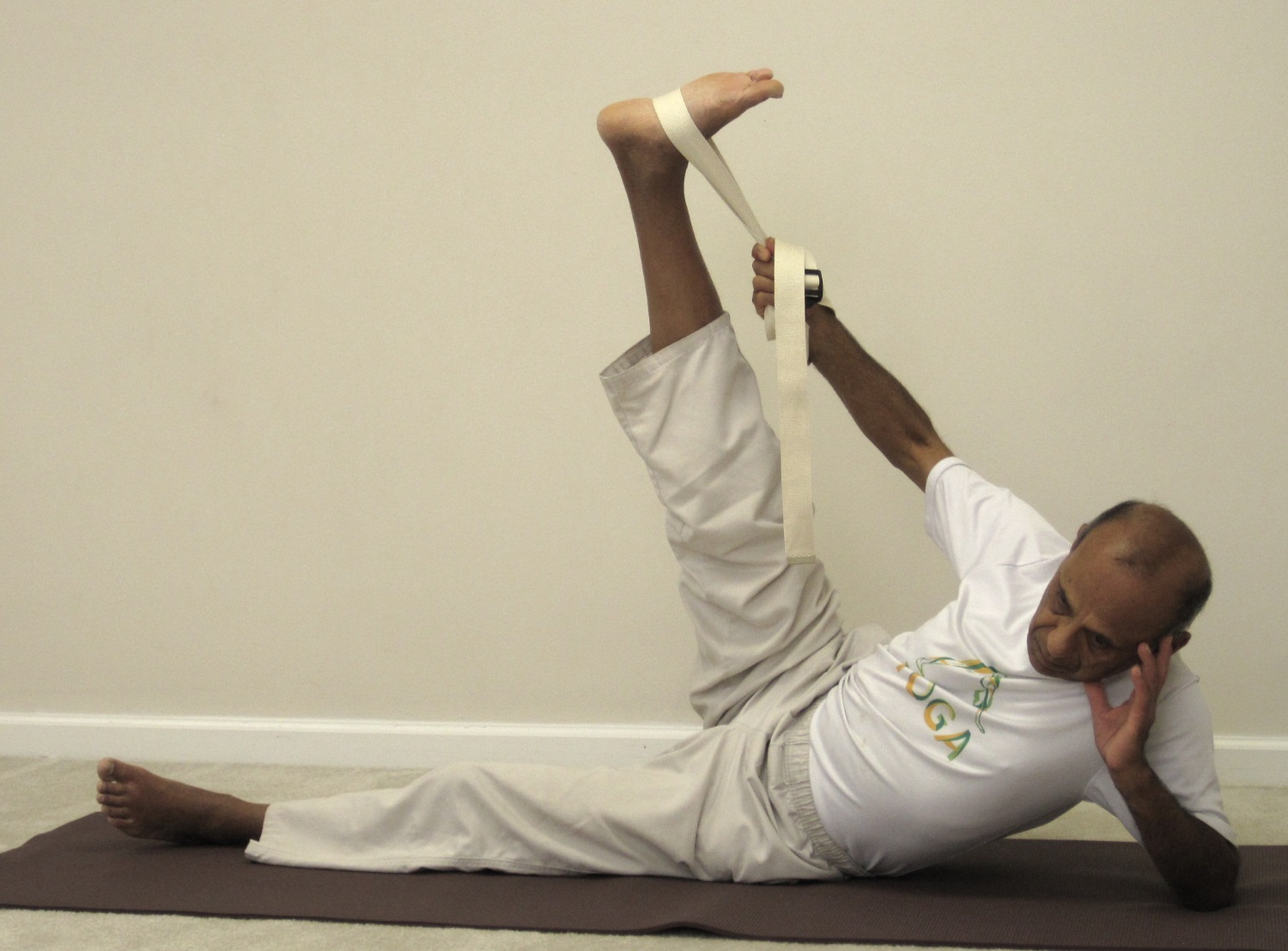
Anantasana (Reclining Vishnu)
Anantasana (अनन्तासन), also called the Reclining Vishnu pose, is a beginner to intermediate level pose. It provides a nice stretch for the legs and also is a balancing pose in the reclining position.

Lord Vishnu
The word "ananta" which literally means endless or infinite, is one of the nicknames for Lord Vishnu. It is also the name of the 1000-hooded serpent that Vishnu is depicted resting on. Other names for the multi-hooded Ananta are Sheshanaga, Adishesha, and Ananta-shesha. In the Bhagavadgita (Chapter 10, verse 29), Sri Krishna, while describing 75 of his common manifestations, declares, "anantaś ca asmi nāgānāṁ": Of the nagas (multi-hooded serpents), I am Ananta. Sage Patanjali, the author of the famous Yoga Sutras, is also known to be an avatara (reincarnation) of the great Ananta-Shesha.

Anantasana (Against the wall)
Step-by-step
- Relax on your back in Shavasana for a few moments.
- Turn the body to your left.
- Keep the legs straight and the whole body in a single vertical plane.
- Stretch your left arm back, overhead. Bend the elbow and rest your head on the left palm.
- Bend the right knee and hold the right big toe with the index and middle fingers and the thumb.
- Slowly begin to stretch the leg straight and try to make it vertical.
- If you are unable to stretch the leg straight, you may like to use a strap to hold the foot and then try to stretch the leg.
- In the final position, you will notice a tendency to drop the foot forward and the hips backward. This will position the body at an angle. In the Anantasana, our effort is to keep the body in a single vertical plane with the right leg vertical and the left leg in a straight line with the buttocks and the shoulders.
- If you find it difficult to maintain the body in one line, you may keep a bolster behind your back for support.
- As an experiment, you may also try to go against the wall and keep the entire back side of the body touching the wall while in the final pose. That will give you a good idea as to the placement of the legs and the buttocks.
- Maintain the final position for about ten breaths. Then release the leg down and rest in Shavasana for a few breaths.
- Now roll to your right and repeat the above steps on the other side.

Anantasana (With strap)
Benefits
- It is a great pose for stretching the entire back side of the legs.
- Helps develop balance.
- Tones the thighs and abdominal muscles.
- Stretches the side of the body.
- Strengthens the shoulders.
- Improves blood (and oxygen) circulation in your heart and brain.
- Improves digestion.
Contraindications
- Avoid the pose in case you have neck or shoulder pain.
- Practice with caution, under the guidance of a yoga teacher, if you have sciatica, slip disc or spondylitis.
Recent Comments